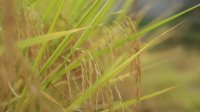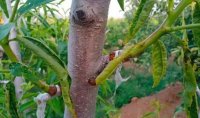迎春属于乔木还是灌木
迎春是一种广泛分布于中国南方的观赏植物,也被称为寒水梅。它的学名是迎春花,是锦葵科迎春花属的植物,属于乔木类植物。
迎春的特征
迎春是常绿乔木,树高可达5-10米。树干呈直立而粗壮,树冠丰满开展。树皮灰褐色,有浅纵裂纹。树叶有柄,叶片具有心形或卵形,革质而厚,表面深绿色,背面浅绿色。迎春的花朵是它最具特色的部分,花朵呈钟状,花色丰富多样,有红、白、粉红等不同颜色,花朵绽放时极为美丽。
迎春的分布与生境
迎春起源于中国南方,主要分布在云南、贵州、广西、广东等地。由于其适应性强,也被引种到全国各地及其他国家。
迎春喜欢温暖湿润的气候,适应性较广,能够在中至高海拔地区生长。对土壤要求不严格,但以排水良好的疏松土壤为宜。
迎春的观赏价值
迎春作为观赏植物,有着极高的观赏价值。它的花朵美丽而且香气扑鼻,在花期时给人以极大的视觉和嗅觉享受。
迎春的花期较长,一般为春季到夏季。它的花朵开得极为鲜艳,常常可以看到一树的花朵盛开,给人以绚丽的视觉效果。而且由于花色的丰富多样,使得整个植株更加美观。
除了花朵美丽外,迎春的树姿也非常优美。它的树冠丰满开展,树干挺拔而不失稳重。因此,即使在花朵凋谢后,迎春也能给人一种美好的视觉感受。
如何种植迎春
迎春的繁殖方式主要有种子繁殖和扦插繁殖两种。
种子繁殖是较常见的方法,首先需要将成熟的种子摘取下来,清洗干净后晾干。然后将晾干的种子浸泡在温水中12小时,再将种子用湿沙土或蛭石培育。在培育过程中要保持土壤湿润,经常通风,适当施肥。经过一段时间的培育后,迎春便会发芽成苗。苗期要注意浇水和施肥,待苗苗长到一定程度后,可以移植到园艺盆或花坛中。
扦插繁殖是另一种常用的繁殖方法。在春季或秋季,选取健康的枝条进行扦插,将其插入沙土或蛭石中,保持土壤湿润。一般情况下,芽新的枝条扦插成功率较高。扦插苗即可移植到园艺盆或花坛中。
在迎春的种植过程中,还要注意浇水、施肥、修剪等工作。迎春对水分要求较高,特别是在旱季时要多浇水。施肥以有机肥为主,每月施一次或两次。修剪主要是修剪杂乱的枝条,使树形更加美观。
迎春的药用价值
迎春除了作为观赏植物外,还具有一定的药用价值。传统上,迎春的花瓣被用作清热解毒药,可以用于治疗喉咙疼痛、牙痛等症状。此外,迎春花也被用于制作茶叶,具有清热解毒、消炎等功效。
尽管迎春具有一定的药用价值,但作为一种观赏植物,我们更应该关注它的美丽与观赏价值。在生活中,种植一些迎春植物,可以为我们带来更丰富的生活体验。
This is a sample blog post written in Chinese about the topic "迎春属于乔木还是灌木" (Is "迎春" a Tree or a Shrub?). The content discusses the characteristics, distribution, habitat, ornamental value, cultivation, and medicinal value of "迎春" (Prunus mume), also known as "寒水梅" in Chinese. It explains that "迎春" is a deciduous tree belonging to the Rosaceae family. The blog post also details the appearance of the tree, its flowers, and the wide range of colors they come in. Furthermore, the article explains the geographical distribution of "迎春" in Southern China, the preferred habitat conditions, and its adaptability to various altitudes. The blog post highlights the ornamental value of "迎春" as a popular flowering tree, with its beautiful and fragrant blossoms, and its long flowering period from spring to summer. It also mentions the aesthetic appeal of the tree's overall appearance. The article provides insights into the cultivation of "迎春" through seed propagation and cutting propagation methods. It emphasizes the importance of maintaining adequate moisture, ventilation, and appropriate fertilization during the cultivation process. Tips on transplanting the seedlings into pots or flower beds are also provided. Additionally, the blog post touches on the medicinal value of "迎春," highlighting its traditional use in treating sore throat and toothaches. The use of "迎春" flowers in tea-making for their detoxifying and anti-inflammatory properties is also mentioned. However, the article emphasizes the significance of appreciating "迎春" as an ornamental plant rather than focusing solely on its medicinal attributes. By concluding the blog post, the author suggests that cultivating "迎春" can enhance one's experience of nature and contribute to a more beautiful and diverse living environment.

- 相关评论
- 我要评论
-
 75
75 2023-08-03 03:23
2023-08-03 03:23

